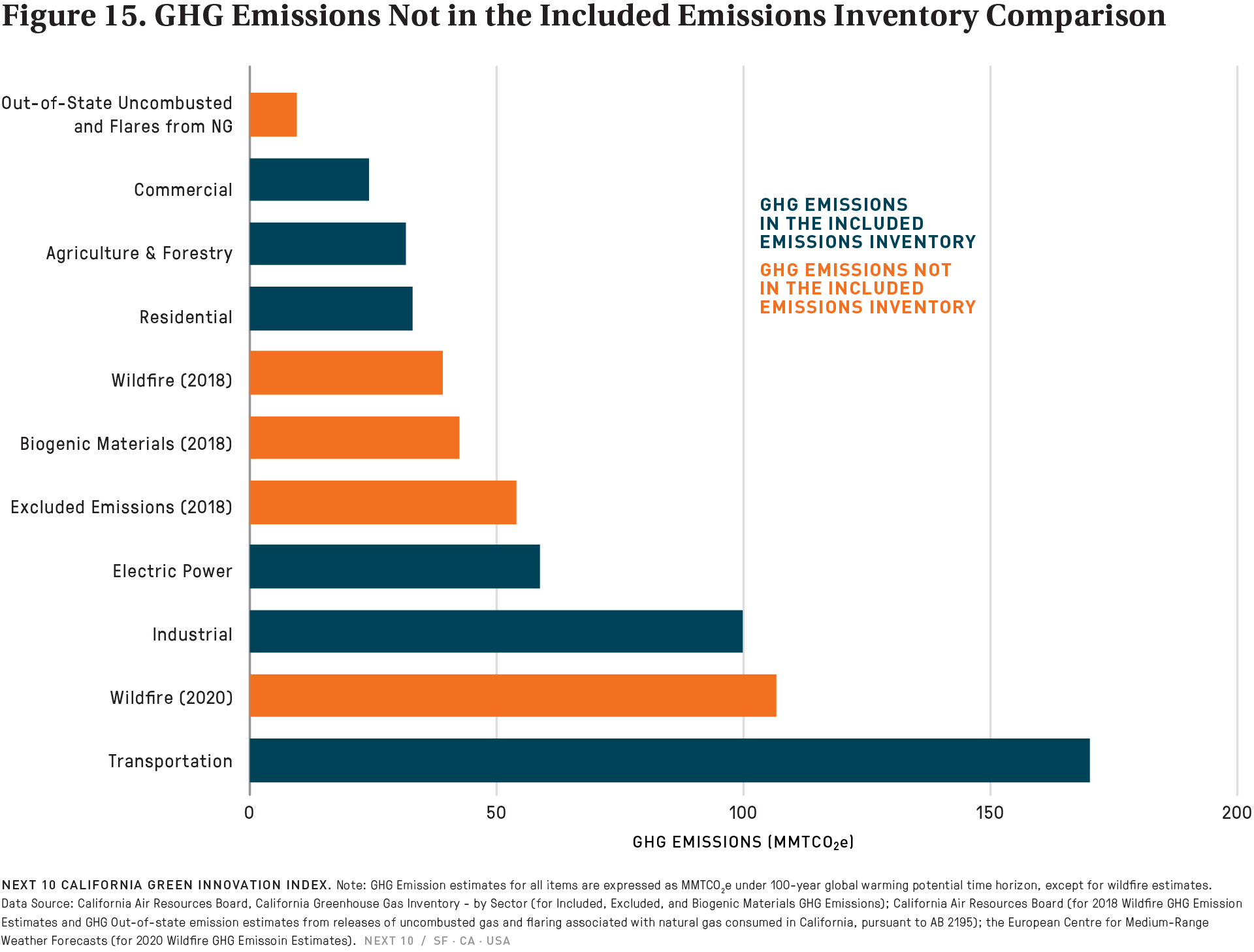Highlight
- The amount of GHG emissions from the loss or release of un-combusted natural gas to the atmosphere and emissions from natural gas flares24 for 2019 is estimated to be 9.6 MMTCO2e,25 up slightly from 9.5 MMTCO2e in 2018. The increase is driven by an increase in import volume (+5.7%).
24 Assembly Bill 2195, enacted in 2018, requires the California Air Resources Board to “quantify and publish annually the amount of greenhouse gas emissions resulting from the loss or release of un-combusted natural gas to the atmosphere and emissions from natural gas flares during all processes associated with the production, processing, and transporting of natural gas imported into the state from out-of-state sources,” beginning January 1, 2020. See: “Out-of-State Greenhouse Gas Emissions from Loss, Release, and Flaring of Natural Gas Imported to California.” California Air Resources Board. November 5, 2020. Retrieved from: https://ww3.arb.ca.gov/cc/inventory/pubs/reports/2000_2019/ab_2195_out_of_state_natural_gas_emissions.pdf
25 California Air Resources Board provided estimates for both a 100-year GWP time horizon and a 20-year GWP time horizon. Given that the GHG inventory is prepared using AR4 100-year GWP values, the amount displayed here is for the 100-year GWP time horizon. Otherwise, using the 20-year GWP time horizon, emissions are estimated to be 25.9 MMTCO2e. This is not part of the included emissions.
Challenge
- Emissions stemming from wildfires are higher than ever in California’s recorded history. Emissions from wildfires26 in California totaled 106.7 MMTCO2e in 2020, more than any other economic sector except for transportation. The August Complex fire, which released an estimated 27.7 MMTCO2e of emissions alone,27 is more than all the included emissions from the commercial sector (24.2 MMTCO2e). Unfortunately, 2021 will also be another year with high emissions from wildfires, even though California has not entered main wildfire season as of the writing of this report (early September). Although fire is a natural and critical ecological function, California ARB has noted that “catastrophic wildfires, land conversion, and other disturbances that are largely driven by climate change and human activity, have turned [our] natural and working lands into a net source of emissions,28 which makes achieving carbon neutrality even more challenging.”
26 According to California Air Resources Board, wildfire emissions contribute to climate change. It is important to note that emissions from wildfires are not part of the included emissions inventory, which is concerned with GHG emissions from fossil fuel combustion and other anthropogenic emissions. Since wildfire emissions are not necessarily the result of fossil fuel combustion or other anthropogenic activities, these are not considered to be part of the included emissions. In addition, fire is a natural and critical ecological function for maintaining healthy and resilient forests, and supports several ecosystem functions such as facilitating germination of seeds, replenishing soil nutrients, stimulate tree growth, and reducing fuels. This is another reason why wildfire emissions are estimated separately and are not part of the included emissions. For more information, please visit CARB’s webpage: https://ww2.arb.ca.gov/resources/documents/frequently-asked-questions-wildfire-emissions
27 Wildfire Emission Estimates for 2020. CARB. Retrieved from: https://ww2.arb.ca.gov/sites/default/files/2021-07/Wildfire%20Emission%20Estimates%20for%202020%20_Final.pdf
28 CARB. An Inventory of Ecosystem Carbon in California’s Natural & Working Lands. 2018 Edition. Downloadable from https://ww3.arb.ca.gov/cc/inventory/pubs/nwl_inventory.pdf
